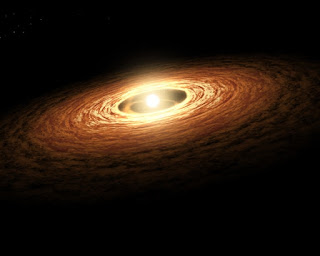NASA's Dragonfly Mission: Unveiling The Secrets Of Saturn's Moon, Titan


Nasa's astronauts using James Webb telescope absorbed a disk of gass and dust around young,low mass star called iso-chal 147
Which are from planets in future.the star is about 1 to 2 million light years away and 1/10 th of mass of sun.it is still in initial stages of formation
 |
This image shows how disk of gasses |
Using James Webb telescope spectrometry technology scientists detected more presence of carbon-bearing molecule in disk around star including
 |
| Spectrum of star iso-chal 147 which is given by NASA's James webb.conforms presence of carbon-bearing molecules in protoplanetary |
• Ethane
• Ethylene
• Propyne
• Methyl radical
And other carbon compounds
Based on this observations we can conclude few things about plants (which are from in future). observations suggest that due to presence of carbon molecules planets forming have diffrent compositions than those plants forming around sun like star potentially leading to carbon-poor planets
In contrast,disk around the star is typically dominated by oxygen-bearing molecules(like H2o)and carbon dioxide.these unique chemistry of star is due to its loss mass and low temperature.which are some of the factors can effect chemical reactions and molecular formation
This observations with the help of James Webb telescope can increase our knowledge about planets formation especially life supporting planets formation around small stars.
This is only summary (which has mention main things ).you need to know full data then go through the link click here
Comments
Post a Comment